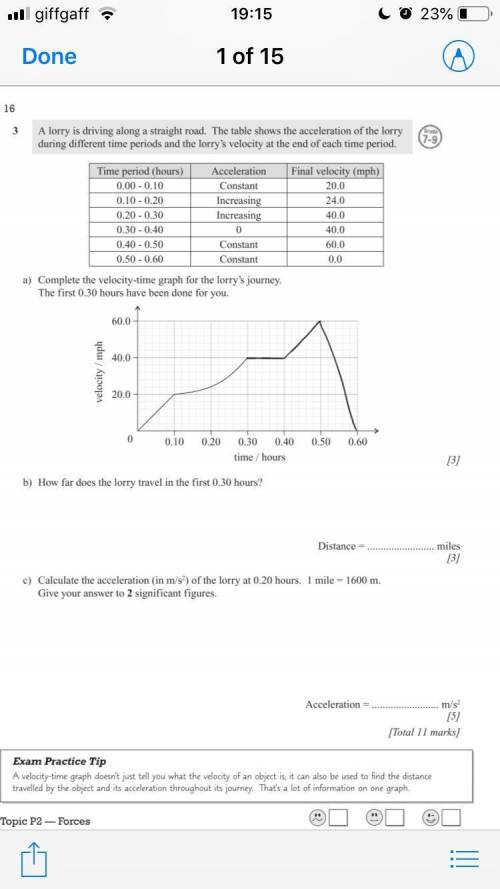

Answers: 2
Other questions on the subject: Physics

Physics, 21.06.2019 22:30, mirellaenriquez5529
Follow these directions and answer the questions. 1. shine a pencil-thin beam of light on a mirror perpendicular to its surface. (if you don't have a laser light as suggested in the video, you can make a narrow beam from a flashlight by making a cone from black construction paper and taping it over the face of the flashlight.) how does the light reflect? how does the relationship of incident to reflected ray relate to the reflection of water waves moving perpendicular to a barrier? 2. shine a pencil-thin beam of light on a mirror standing on a sheet of paper on the table (or floor) so that you can mark the incident ray and reflected ray. (you can support the mirror from the back by taping it to a wooden block.) 3. mark a line on the paper representing the reflective surface. (the reflective surface of a mirror is usually the back edge.) 4. draw a dashed line perpendicular to the mirror surface at a point where the incident and reflected ray meet. this perpendicular is called a normal to the surface. 5. measure the angles between the rays and the normal. the angle of incidence is the angle formed by the incident ray and the normal to the surface. the angle formed by the reflected ray and normal is called the angle of reflection (r). what is the angle of incidence? what is the angle of reflection? 6. repeat for several different angles. (see report sheet for details.) what appears to be the relationship between the angle of incidence and angle of reflection? in science 1204, what was the relationship for these two angles made by the reflection of waves in a ripple tank? 7. roll a ball bearing so that it hits a fixed, hard surface (a metal plate) at several angles (including head-on). observe the way in which the ball bearing reflects. what generalization can you make about how a ball bearing reflects from a wall? have you proved that light can only behave like a wave?
Answers: 1

Physics, 22.06.2019 06:00, Catgirl7060
(01.02 mc) nicole pushes her bike up a hill. overhead, the sun exerts a gravitational force on earth. which statement is true about the bike and earth? they both experience contact forces. they both experience non-contact forces. the bike experiences a non-contact force and earth experiences a contact force. the bike experiences a contact force and earth experiences a non-contact force. they both experience non-contact forces.
Answers: 1

Physics, 22.06.2019 10:00, Trinhphuongtran
One object has a mass of 1 kg and another object has a mass of 3 kg. if the speeds are the same, which of the following is true about their kinetic energy?
Answers: 2
Do you know the correct answer?
Will give brainliest plz help!!
i have answered (a) but i really need help with answer (b) and(c)
Questions in other subjects:

Physics, 03.08.2019 12:00









Mathematics, 03.08.2019 12:00







